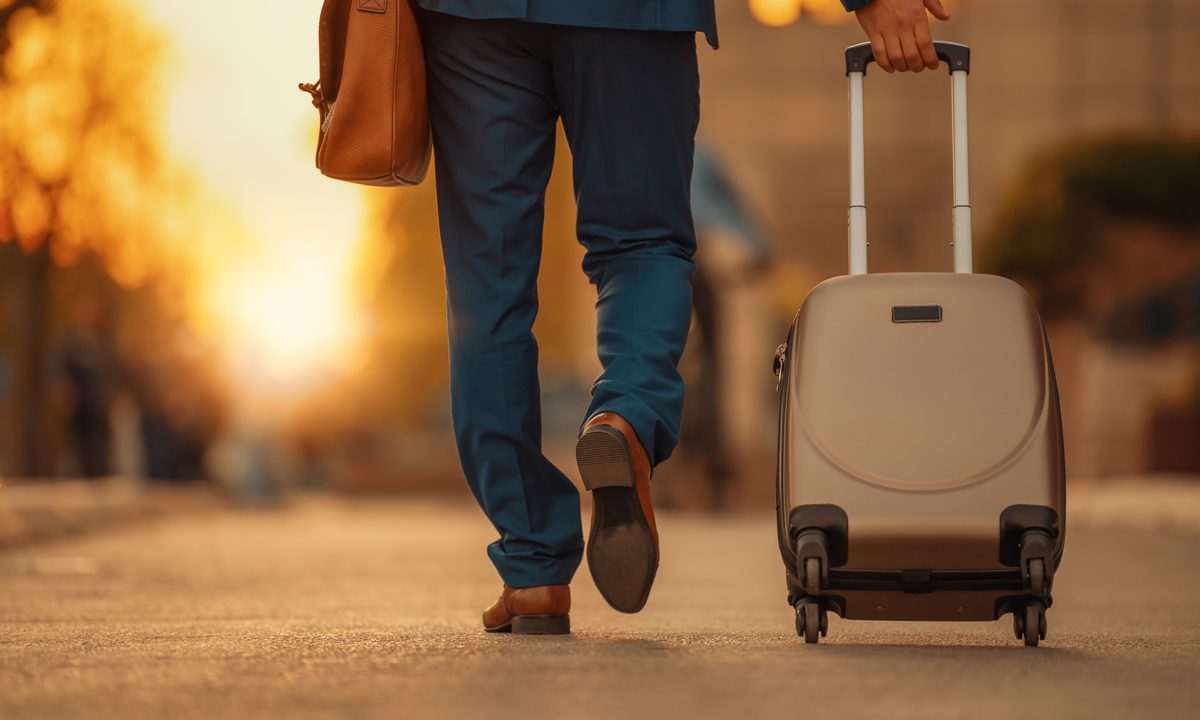Business Travel Takeoff Looks Imminent as Conditions Improve — But Who Really Knows?

Been seeing all the photos of people at live business events lately? It’s masks-off, flaps-up and stow-your-tray-table time for business travel, according to multiple reports and market signals.
On Thursday (April 21), the Global Business Travel Association (GBTA) published member survey results finding that 86% of companies are now OK’ing non-essential domestic business travel. For context, that reflects a 10-percentage point rise since the association’s last poll in February.
“We’re seeing significant gains in the return of business travel, especially over the past month or two,” GBTA CEO Suzanne Neufang said. “Booking levels and travel spending continue to return, and there’s high levels of optimism and employee willingness to travel for business.”
Of all the companies that canceled or suspended most or all trips to a specific country, three-quarters plan to resume domestic travel, and just over half plan to resume international travel in the next three months, the association added.
See also: Business Travel Unlikely to See 2019 Levels Again Until 2024 — If Ever
That news was well-timed given major airlines reporting this week and offering similarly sunny outlooks on corporate travel’s rebound in 2022 as Q2 gets underway.
But remember that not everyone’s outlook is buoyant. In November, Anthony Jackson, U.S. airlines leader at Deloitte told The Wall Street Journal that “Companies are re-evaluating and trying to understand where does travel make sense and where does it not make sense. Technology will change behavior and how companies will do their jobs.”
Card issuers have said business travel spend may remain depressed and take until 2025 to reach 75% of 2019 spend. That’s consistent with industry analysts who also say that 25% of business travel may never return as technology provides suitable substitutes — and the days of hopping on a plane for a meeting are long gone. Further fueling uncertainty is the impact on inflation on corporate belt tightening, and CFOs who were used to tiny travel and events budgets dial back to conserve cash. War in Ukraine and COVID-19 in parts of the world will continue to be a factor in the pace of recovery.
Airlines Uplifted
On Wednesday (April 20) United Airlines said it expect to swing back to a profit in the second quarter, adding that it sees all signs pointing to a rapid return in business demand, including in Asia.
Pointing to record revenues in March, rival American Airlines said on Thursday (April 21) that “Revenue from small- to medium-size businesses and customers traveling for a mix of business and leisure remains very strong and is approaching a full recovery, and corporate bookings are the highest they have been since the start of the pandemic.”
Well, that’s not exactly saying much since the start of the pandemic was clearly a very low water mark for the travel sector.
Demand for international travel has also picked up considerably as restrictions have lifted in, American said.
On the news, The Wall Street Journal reported, “While trans-Pacific travel is still depressed, American believes overall corporate revenues will shoot up to 90% of 2019 levels in the second quarter, from 50% now. On long-haul flights, ‘we’re seeing not just more customers simply sign off for flights, but fulfilling premium cabins at a better and better rate,’ chief commercial officer Vasu Raja told analysts Thursday.”
The industry has continued to gather momentum, The New York Times reported, with Delta reporting that March sales beat an all-time record set in 2019, despite a 10% reduction in seat capacity since then.
See also: Sabre, eRoam Launch Travel Solution for Agencies
Echoing that upbeat read, Reuters reported Thursday that “Airline fares are up more than 50% year-on-year, according to data from research firm Cowen. United, which is passing along a majority of its fuel cost to customers, said the demand for business, leisure and cargo traffic remains strong despite higher ticket prices.”
At least for now.
Hotels Await Corporate Crowds
Those business fliers will need hotel rooms, and a lodgings sector badly harmed by the pandemic is eagerly awaiting their arrival.
On that count, the U.S. Travel Association (USTA) released results of its Quarterly Business Travel Tracker in early April, finding that “84% of business travelers expect to take at least one trip to attend conferences, conventions or trade shows in the next six months.”
Rather than fear of COVID-19 and its variants, the USTA survey found would-be business travelers experiencing uncertainty around “meetings and events not occurring. Corporate policies restricting business travel was the second-highest reason for uncertainty.”
